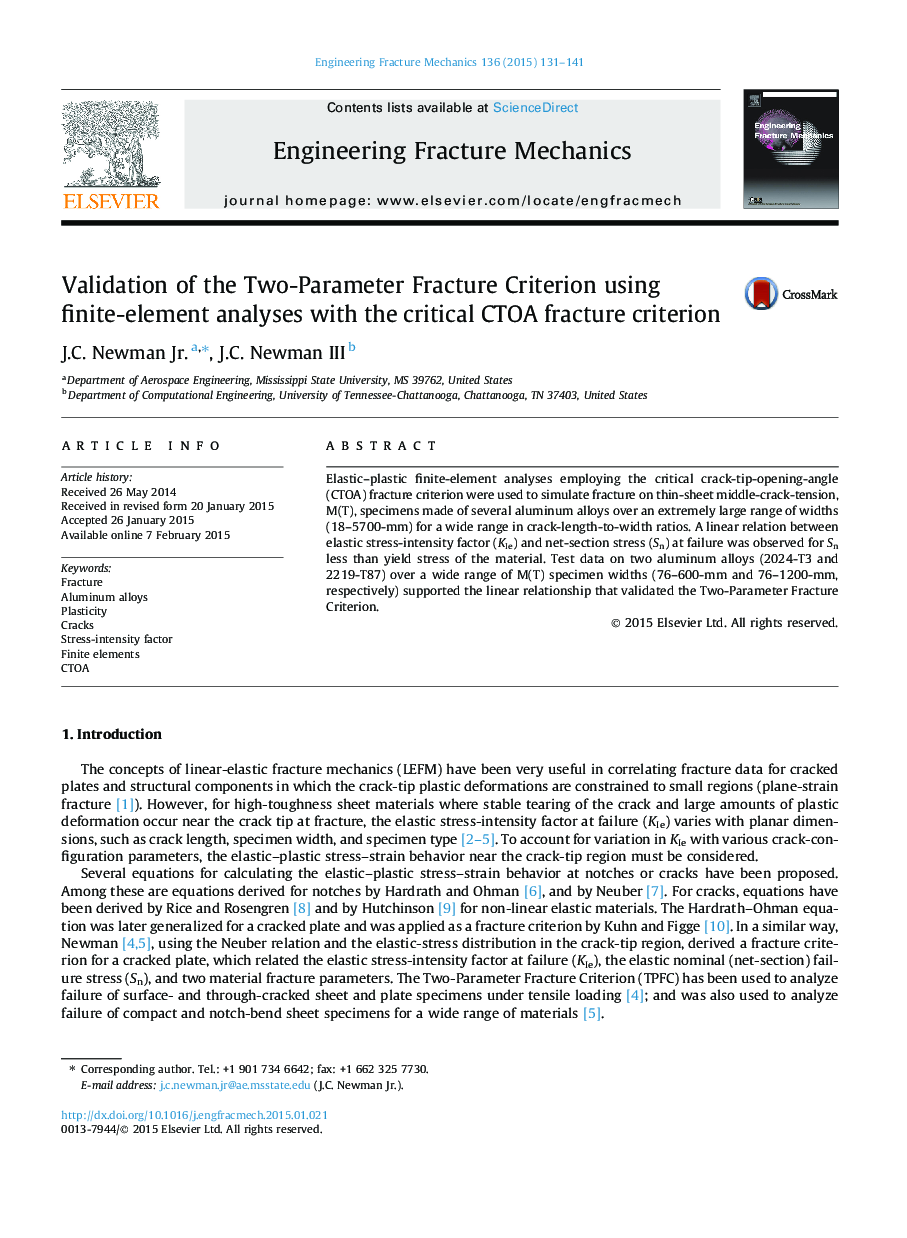| کد مقاله | کد نشریه | سال انتشار | مقاله انگلیسی | نسخه تمام متن |
|---|---|---|---|---|
| 770405 | 1463092 | 2015 | 11 صفحه PDF | دانلود رایگان |

• Two-Parameter Fracture Criterion gave linear relation between KIe and net-section stress.
• Elastic–plastic finite-element analyses using critical crack-tip-opening-angle (CTOA).
• Middle-crack-tension specimens analyzed over a very wide range in specimen widths.
• Both fracture criteria agreed well (within 5%) of each other.
• Comparisons with test data on two aluminum alloys were very good.
Elastic–plastic finite-element analyses employing the critical crack-tip-opening-angle (CTOA) fracture criterion were used to simulate fracture on thin-sheet middle-crack-tension, M(T), specimens made of several aluminum alloys over an extremely large range of widths (18–5700-mm) for a wide range in crack-length-to-width ratios. A linear relation between elastic stress-intensity factor (KIe) and net-section stress (Sn) at failure was observed for Sn less than yield stress of the material. Test data on two aluminum alloys (2024-T3 and 2219-T87) over a wide range of M(T) specimen widths (76–600-mm and 76–1200-mm, respectively) supported the linear relationship that validated the Two-Parameter Fracture Criterion.
Journal: Engineering Fracture Mechanics - Volume 136, March 2015, Pages 131–141